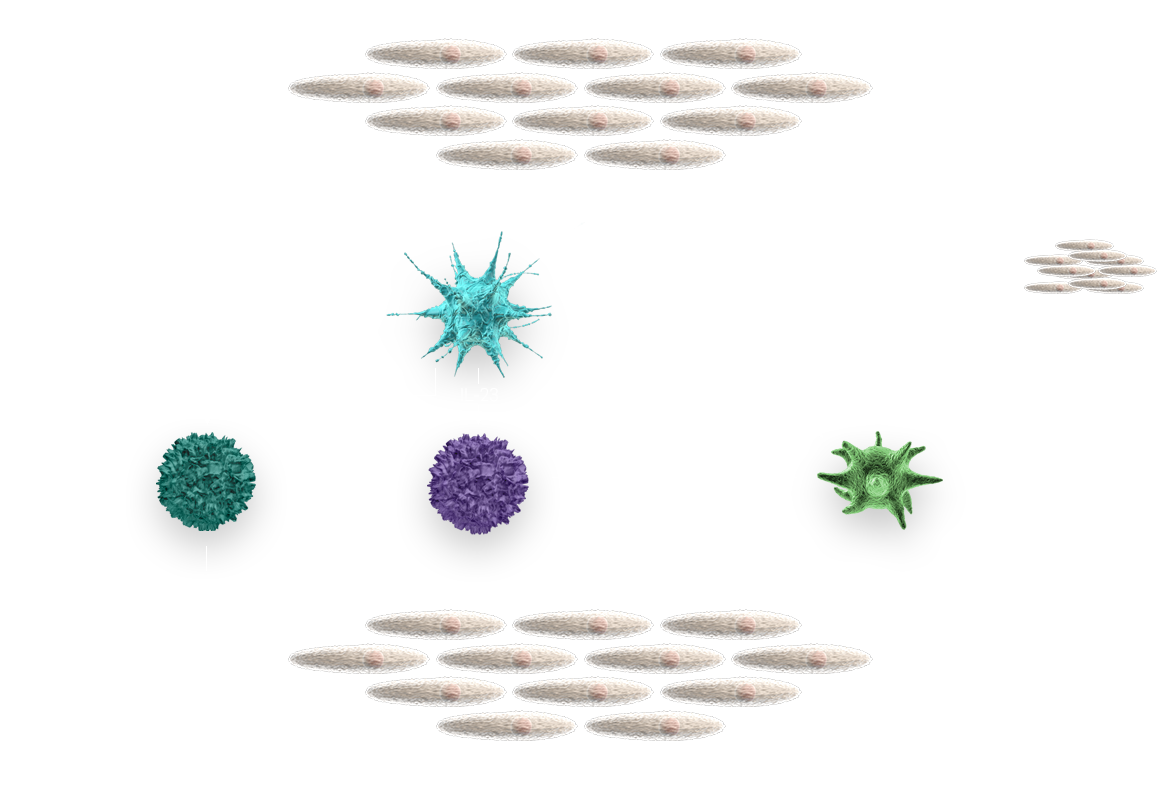Pro-inflamatory cytokines released by keratinocytes activate the innate and adaptive immune systems
TNF-α inhibitors act here They bind to TNF-α preventing TNF-α from activating the innate and adaptive immune systems
Adaptive immune system
Innate immune system
Inactive macrophages
Inactive
mast cells
Inactive neutrophils
Inactive innate lymphoid cells
Active macrophages
Active mast cells
Active neutrophils
Active innate lymphoid cells
Cytokines released from activated dendritic cells stimulate T cells to differentiate
IL-12/23 inhibitors act here They bind to IL-12 and IL-23 preventing IL-12/23 from activating naïve T cells
Th17
Th17
Th17 cells are present in higher numbers and expression of IL-17 is higher in psoriatic lesions compared with healthy tissue. Global gene expression studies have consistently demonstrated the upregulation of the IL-17 pathway in psoriasis.
Th1
Th1
It has been recognised for many years that the Th1 pathway is involved in psoriasis, although recent research has highlighted the significance of other pathways such as Th17.
Activated T cells and innate immune system cells release more cytokines which activate keratinocytes
IL-17A inhibitor Cosentyx (secukinumab) acts here It binds to IL-17A and prevents IL-17A from activating keratinocytes
Keratinocytes are activated, proliferate and the cycle starts again

